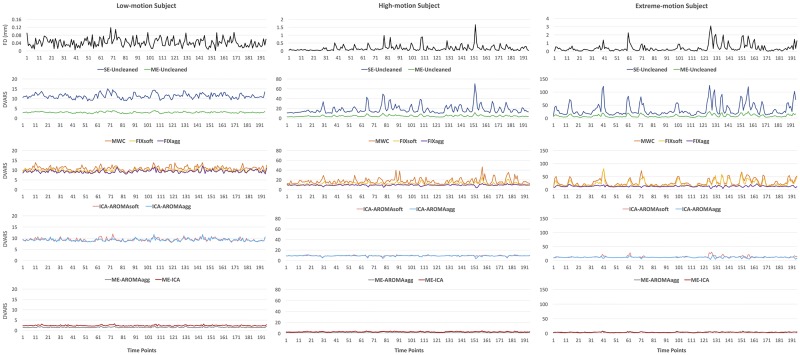Fig 1. Example of participants with different degrees of head motion: Low motion on the left (mean relative displacement = 0.03 mm), high motion in the central column (mean relative displacement = 0.13 mm) and extreme motion on the right (mean relative displacement = 0.39 mm).
From top to bottom the traces of: Frame-wise displacement (FD); comparison of DVARS for data cleaned using SE-Uncleaned (blue line), ME-Uncleaned (green line), MWC (orange line), FIXsoft (yellow line), FIXagg (purple line), ICA-AROMAsoft (pink line), ICA-AROMAagg (light-blue line), ME-AROMAagg (red line) and ME-ICA (grey line). Left, central and right plots are differently scaled in order to have a good view of the low-motion subject’s lines. The DVARS related to each data cleaning procedure qualitatively shows that for the low motion subject (left) all the methods work efficiently, while for the high motion subjects (middle and right) MWC and FIXsoft do not effectively remove most motion-related peaks. FIXagg, ICA-AROMAsoft and ICA-AROMAagg provide better results compared to the other single-echo methods, but the best results were obtained with ME-AROMAagg and ME-ICA. In fact, their DVARS traces are flattened and show a substantial reduction of the motion-related peaks.

